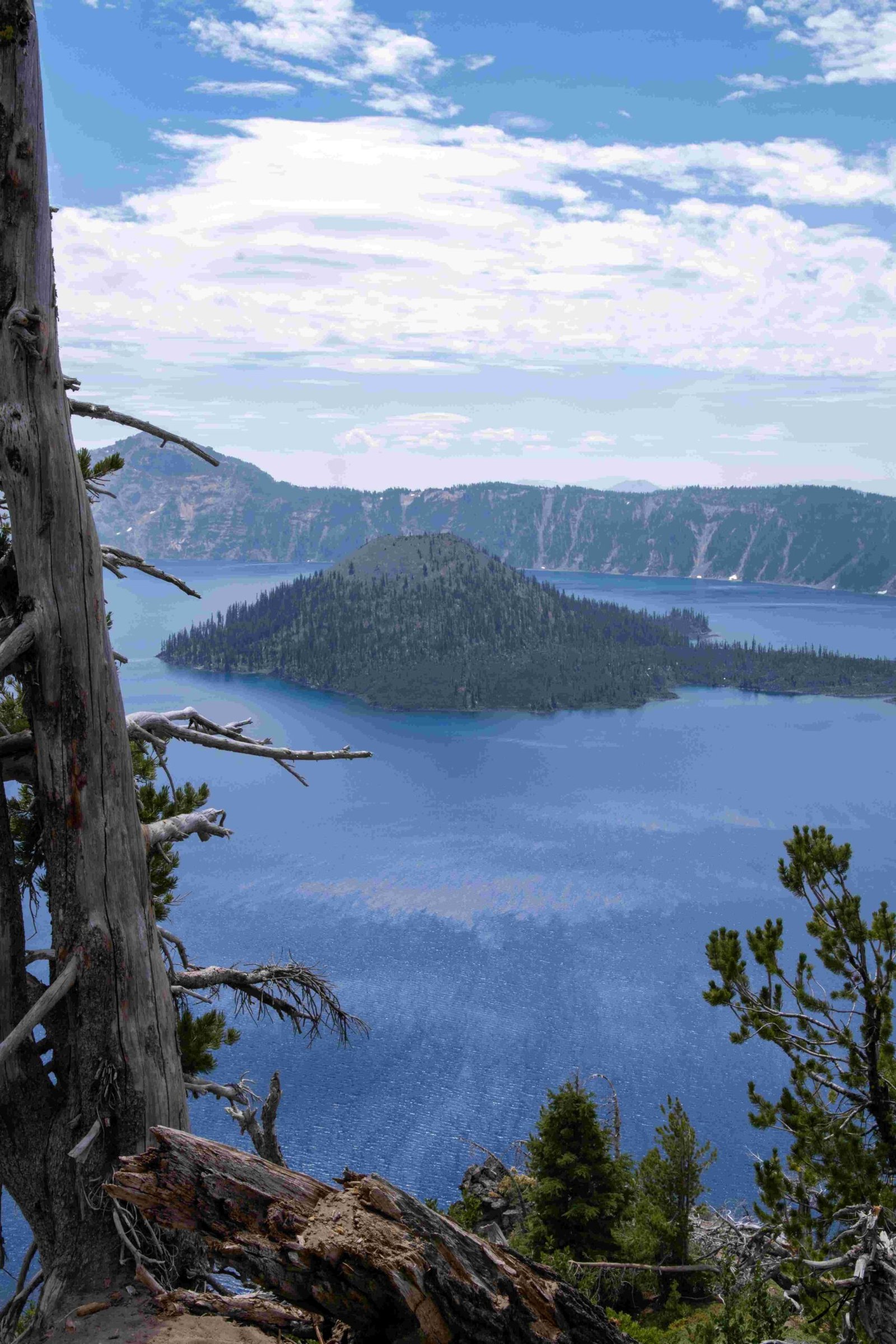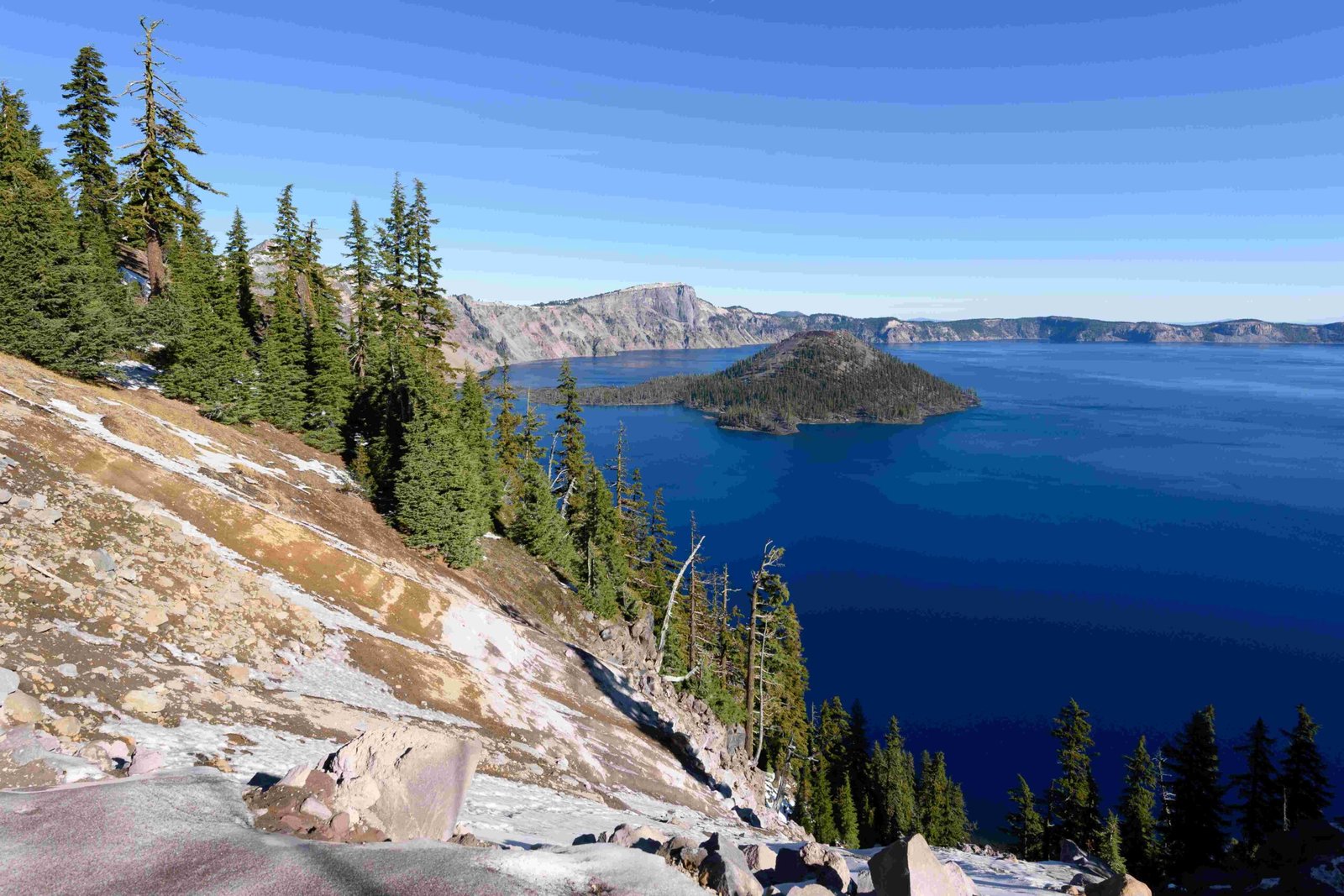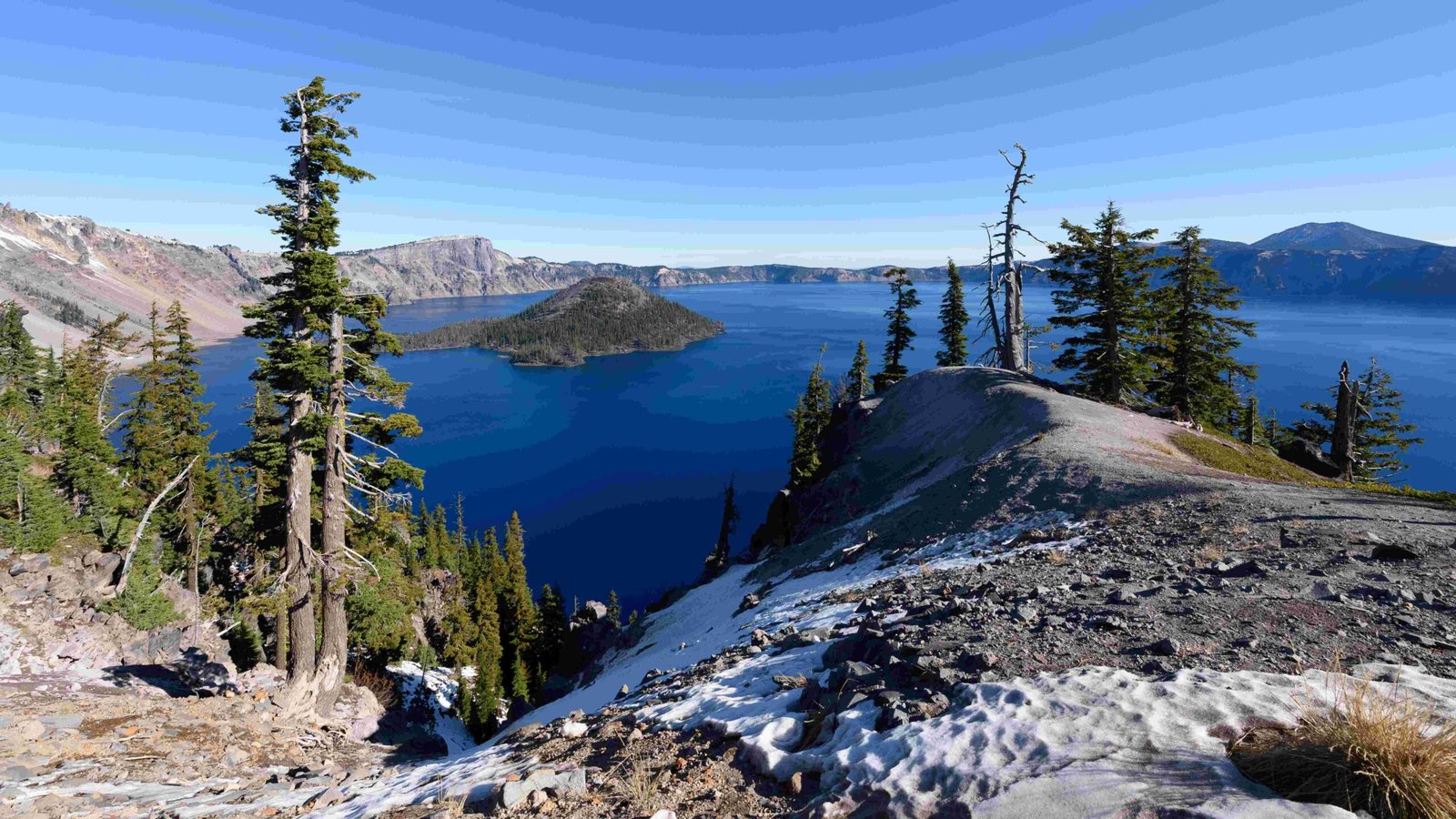Crater Lake National Park in Oregon is a natural wonder, boasting the deepest lake in the United States. Formed by a volcanic eruption nearly 7,700 years ago, this pristine blue lake is surrounded by cliffs almost 2,000 feet high. The park offers visitors a unique blend of scenic beauty, geological history, and outdoor activities, making it a must-visit destination in the Pacific Northwest.
What Makes Crater Lake Natl Park Oregon Unique?

Crater Lake National Park stands out for its extraordinary geological features and pristine natural beauty. The lake’s intense blue color, resulting from its depth and purity, is a sight to behold. The park’s unique formation story, involving the collapse of Mount Mazama, adds to its allure for geology enthusiasts and casual visitors alike.
Key features include:
- Deepest lake in the United States (1,943 feet)
- One of the clearest and purest large bodies of water in the world
- Stunning 360-degree crater rim views
- Wizard Island, a cinder cone rising from the lake
- Diverse ecosystem with old-growth forests
What Activities Can Visitors Enjoy at Crater Lake Natl Park Oregon?

Crater Lake National Park offers a wide range of activities for visitors throughout the year. Here’s a breakdown of popular activities:
- Scenic Drives
- Rim Drive: A 33-mile road circling the lake with numerous viewpoints
-
Volcanic Legacy Scenic Byway: Part of a larger route showcasing volcanic landscapes
-
Hiking
- Cleetwood Cove Trail: The only trail leading to the lake shore
- Garfield Peak Trail: Offers panoramic views of the lake and surrounding area
-
Watchman Peak Trail: A moderate hike to a fire lookout with stunning vistas
-
Boat Tours (seasonal)
- Standard Lake Cruise: 2-hour tour around the lake
-
Wizard Island Tour: Includes time to explore the island
-
Winter Activities
- Snowshoeing
- Cross-country skiing
-
Ranger-led snowshoe walks
-
Stargazing
- The park’s dark skies offer excellent opportunities for astronomy enthusiasts
When Is the Best Time to Visit Crater Lake Natl Park Oregon?
The best time to visit Crater Lake National Park depends on your preferred activities and weather conditions:
| Season | Pros | Cons |
|---|---|---|
| Summer (July-September) | – Warm temperatures – All facilities open – Boat tours available |
– Crowded – Potential for wildfires |
| Fall (October-November) | – Fewer crowds – Beautiful fall colors |
– Some facilities begin to close – Cooler temperatures |
| Winter (December-April) | – Snow-covered landscapes – Winter activities available |
– Limited access (North Entrance closed) – Many facilities closed |
| Spring (May-June) | – Wildflowers blooming – Fewer crowds |
– Some snow may still be present – Not all facilities open yet |
How Can Visitors Plan Their Trip to Crater Lake Natl Park Oregon?
Planning a trip to Crater Lake National Park involves several considerations:
- Accommodation:
- Crater Lake Lodge (open seasonally)
- Mazama Village Campground
-
Backcountry camping (permit required)
-
Transportation:
- Personal vehicle recommended
-
Shuttle services available in summer
-
Entrance Fees:
- $30 per vehicle (valid for 7 days)
-
Annual passes available
-
Packing Essentials:
- Layers of clothing (temperatures can vary)
- Sun protection
- Hiking boots
-
Binoculars for wildlife viewing
-
Safety Precautions:
- Stay on designated trails
- Be aware of wildlife
- Check weather conditions before activities
What Are the Must-See Viewpoints at Crater Lake Natl Park Oregon?
Crater Lake National Park offers numerous breathtaking viewpoints. Here are some you shouldn’t miss:
-
Rim Village Visitor Center: Offers a classic view of the lake and easy access to information.
-
Cloudcap Overlook: The highest point on Rim Drive, providing expansive views.
-
Phantom Ship Overlook: Best view of the Phantom Ship rock formation.
-
Discovery Point: Ideal for sunset views and less crowded than Rim Village.
-
Watchman Overlook: Excellent views of Wizard Island and the western half of the lake.
What Wildlife Can Be Observed in Crater Lake Natl Park Oregon?
Crater Lake National Park is home to diverse wildlife. Visitors may encounter:
- Mammals: Black bears, elk, mule deer, pika
- Birds: Bald eagles, Clark’s nutcrackers, gray jays
- Fish: Rainbow trout, kokanee salmon (in the lake)
Remember to observe wildlife from a safe distance and never feed animals in the park.
How Does Crater Lake Natl Park Oregon Contribute to Scientific Research?
Crater Lake National Park serves as a living laboratory for scientific research:
- Water Quality Studies: The lake’s exceptional clarity makes it ideal for studying water quality and climate change impacts.
- Geological Research: Ongoing studies of the park’s volcanic history and formation.
- Ecological Monitoring: Research on the park’s unique ecosystems and species adaptations.
- Climate Change Impact: Long-term studies on how climate change affects the park’s environment.
Visitors can learn about ongoing research at the park’s visitor centers and through ranger-led programs.
By exploring Crater Lake National Park, visitors not only witness a natural wonder but also contribute to the preservation and understanding of this unique ecosystem. Whether you’re hiking the rim, taking a boat tour, or simply marveling at the view, Crater Lake offers an unforgettable experience in the heart of Oregon’s natural beauty.

